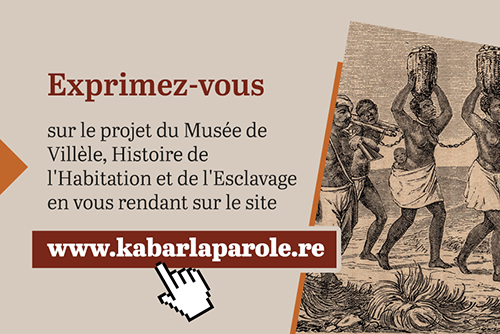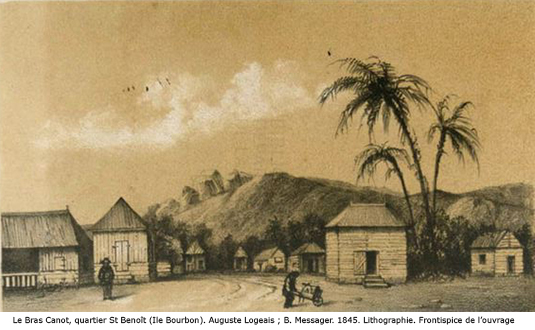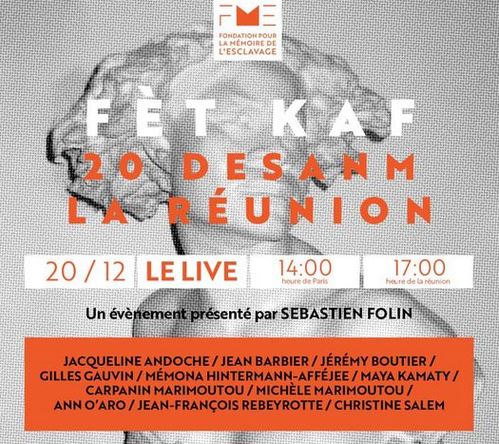
Kabar la parole: Celebration of the spoken word
A public debate to gather the ideas of Reunion citizens for the new Villèle museum.
The Villèle museum now defines itself as being the museum of the estate and of slavery in Reunion. This new identity is reflected in the ongoing restructuring process of the museum site and a reorganisation of its museography.
On 20th December, on the site of the museum, will be held an event baptised Kabar la parole (Celebration of the spoken word), the aim being to gather visitors’ wishes concerning the future museum, its organisation and content. The process will take the form of audio and video recordings of the ideas expressed.
Members of the public can also express their ideas between 20th December 2020 and 31st January 2021, using the ephemeral website dedicated to this operation. www.kabarlaparole.re
Exhibition ‘Slavery on Bourbon island’
For the occasion of the great 20th December 2020 celebrations, the Villèle museum showcased the exhibition entitled ‘Slavery on Bourbon island’, designed and set up by the Departmental Archives of Reunion.
The exhibition, which traces the history of slavery on Reunion, targets schoolchildren, as well as the public in general.
Exhibition ‘Kosa i lé le Kan ?’ (What is the camp?)
An exhibition designed by Prosper Eve, with the collaboration of Alexis Miranville and the Kan Villèle Association, presenting all aspects of ‘the camp’ – the place where the slaves lived on the estate.
Symposium ‘New approaches to slavery.’ Villèle museum – 28th December 2020
In the context of the Indian Ocean History Week, on 28th November 2020, the International Indian Ocean History Association, in partnership with the Departmental Council of Reunion, presented the history of the estate and of slavery, with a symposium at the Villèle museum entitled ‘New approaches to slavery.’
You can replay the resulting discussions, which brought together researchers working in Mauritius island, Madagascar, Mozambique, Paris, Germany and Reunion, who shared their visions and experiences around the two main topics treated: ‘Slavery in slave-trading countries’ and ‘Abolition, reparation and heritage’.
First part of the conference
Second part of the conference

Loisirs. Nouvelles de Bourbon (‘Loisirs’. Short stories of Bourbon island )
by Auguste Logeais
This year, the collections of the Departmental Library of Reunion have been enriched with a collection of short stories edited in 1845 by the publishing house P.A. Genesley-Portier (Laval).
We have very little information concerning this book, only 50 examples of which were printed. The same can be said for its author. We know that he contributed to a newspaper in Laval, L’Echo de la Mayenne, and that he probably lived on Bourbon between 1840 and 1850: his name is listed in the 1847-48 census of slave owners in Saint-Benoit.
The publisher, whose preface indicates the confidential character of the publication, enriched the texts with intricate decorations. Even though the author expresses a number of prejudices in fashion at the time, the book has an additional precursory character in that some of its dialogues and accounts are written in Creole.
Composed of a frontispiece representing Bras-Canot, seven short stories essentially on the topic of fugitive slaves, as well as five letters in which the author gives an account of his wanderings through the island’s society and landscapes. The book presents a collection of previously unpublished literary texts and historical accounts, published a few years before the abolition of slavery, some of them appearing in the press in mainland France.

FET KAF, live celebration organised by the Foundation for the memory of slavery
To celebrate the Fet Kaf, a public holiday to commemorate the anniversary of the abolition of slavery in Reunion, the Foundation for the memory of slavery is holding a commemoration this Sunday at 2 PM (Paris time), 5 PM Reunion time, in the form of an exceptional live event presented by Sébastien Folin.
A voyage of one and a half hours through the history, culture and society of Reunion with the aim of understanding the traces left by the period of slavery and that of post-slavery following 1848.
With Jacqueline Andoche, anthropologist; Jean Barbier, curator of the Villèle museum; Jérémy Boutier, researcher; Gilles Gauvin, history teacher; Mémona Hintermann-Afféjee, journaliste; Maya Kamaty, musician; Carpanin Marimoutou, lecturer in literature; Michèle Marimoutou, historian; Ann O’aro, artist; Jean-François Rebeyrotte, researcher; Christine Salem, musician.
Tune into Facebook account of the FME
Preventive Arcreology, a homage to Wilhiam Zitte
‘ Heritage and creation’ residency by Philippe GAUBERT, at the Villèle museum
Before this exhibition paying homage to Wilhiam Zitte, Philippe Gaubert, the artist in residency, set up to work in two highly symbolical spots of the Villèle museum: the Chapelle Pointue (chapel) and the former slave hospital.
Chapelle Pointue (chapel)
In the Chapelle Pointue, it was decided to offer visitors an installation combining image and sound and evoking the wandering soul of Wilhiam Zitte. The voice of the latter is to be heard and photographs by the artist in residency are projected onto a screen suspended above the altar.
The pictures taken by P. Gaubert, the earliest of which date back to the 1990s, show W. Zitte both in a private and public context.
The installation is completed by the stations of the cross designed by W. Zitte and created by Madagascan women embroiderers in 2007: a creative work funded by the Regional Department of the French Ministry of Culture and intended for the Church of Grand îlet (Salazie). This remarkable work of art is on loan from the diocese of Saint-Denis, Reunion.
Former slave hospital
In this heritage building is screened an original documentary, entitled ‘Omaz à Wilhiam Zitte. Arkréolozi préventive’ (Homage to William Zitte. Preventive arcreology) in which his friends pay homage to him. The video sequences created during the workshop entitled ‘Hommage to Wilhiam Zitte’, created by the students of the Higher School of Art of Reunion are also screened. A selection of original works by the artist, as well as reproductions taken from public and private collections, are presented.